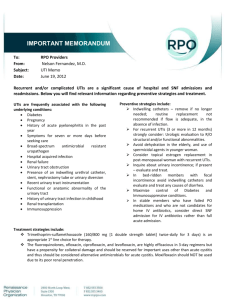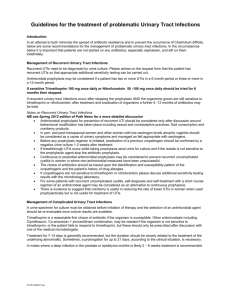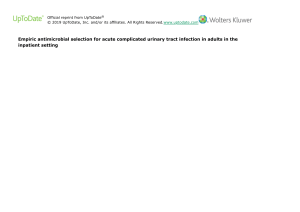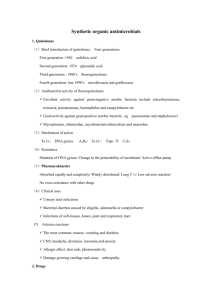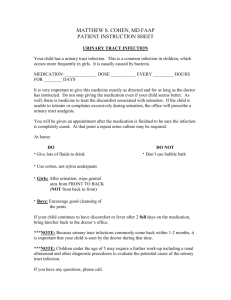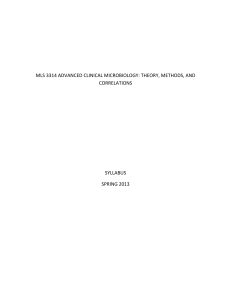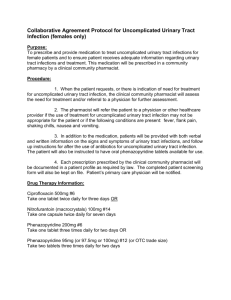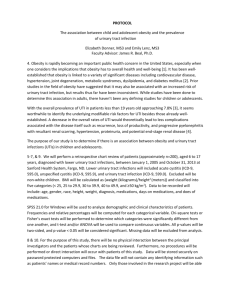WHONET_threshold_references
advertisement
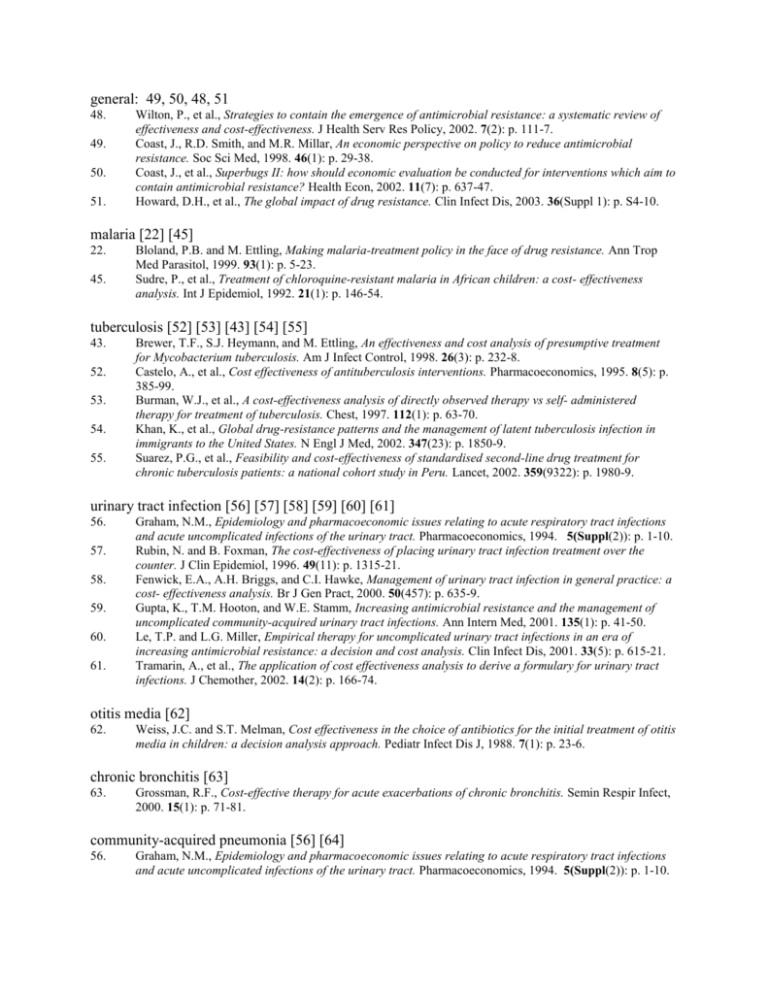
general: 49, 50, 48, 51 48. 49. 50. 51. Wilton, P., et al., Strategies to contain the emergence of antimicrobial resistance: a systematic review of effectiveness and cost-effectiveness. J Health Serv Res Policy, 2002. 7(2): p. 111-7. Coast, J., R.D. Smith, and M.R. Millar, An economic perspective on policy to reduce antimicrobial resistance. Soc Sci Med, 1998. 46(1): p. 29-38. Coast, J., et al., Superbugs II: how should economic evaluation be conducted for interventions which aim to contain antimicrobial resistance? Health Econ, 2002. 11(7): p. 637-47. Howard, D.H., et al., The global impact of drug resistance. Clin Infect Dis, 2003. 36(Suppl 1): p. S4-10. malaria [22] [45] 22. 45. Bloland, P.B. and M. Ettling, Making malaria-treatment policy in the face of drug resistance. Ann Trop Med Parasitol, 1999. 93(1): p. 5-23. Sudre, P., et al., Treatment of chloroquine-resistant malaria in African children: a cost- effectiveness analysis. Int J Epidemiol, 1992. 21(1): p. 146-54. tuberculosis [52] [53] [43] [54] [55] 43. 52. 53. 54. 55. Brewer, T.F., S.J. Heymann, and M. Ettling, An effectiveness and cost analysis of presumptive treatment for Mycobacterium tuberculosis. Am J Infect Control, 1998. 26(3): p. 232-8. Castelo, A., et al., Cost effectiveness of antituberculosis interventions. Pharmacoeconomics, 1995. 8(5): p. 385-99. Burman, W.J., et al., A cost-effectiveness analysis of directly observed therapy vs self- administered therapy for treatment of tuberculosis. Chest, 1997. 112(1): p. 63-70. Khan, K., et al., Global drug-resistance patterns and the management of latent tuberculosis infection in immigrants to the United States. N Engl J Med, 2002. 347(23): p. 1850-9. Suarez, P.G., et al., Feasibility and cost-effectiveness of standardised second-line drug treatment for chronic tuberculosis patients: a national cohort study in Peru. Lancet, 2002. 359(9322): p. 1980-9. urinary tract infection [56] [57] [58] [59] [60] [61] 56. 57. 58. 59. 60. 61. Graham, N.M., Epidemiology and pharmacoeconomic issues relating to acute respiratory tract infections and acute uncomplicated infections of the urinary tract. Pharmacoeconomics, 1994. 5(Suppl(2)): p. 1-10. Rubin, N. and B. Foxman, The cost-effectiveness of placing urinary tract infection treatment over the counter. J Clin Epidemiol, 1996. 49(11): p. 1315-21. Fenwick, E.A., A.H. Briggs, and C.I. Hawke, Management of urinary tract infection in general practice: a cost- effectiveness analysis. Br J Gen Pract, 2000. 50(457): p. 635-9. Gupta, K., T.M. Hooton, and W.E. Stamm, Increasing antimicrobial resistance and the management of uncomplicated community-acquired urinary tract infections. Ann Intern Med, 2001. 135(1): p. 41-50. Le, T.P. and L.G. Miller, Empirical therapy for uncomplicated urinary tract infections in an era of increasing antimicrobial resistance: a decision and cost analysis. Clin Infect Dis, 2001. 33(5): p. 615-21. Tramarin, A., et al., The application of cost effectiveness analysis to derive a formulary for urinary tract infections. J Chemother, 2002. 14(2): p. 166-74. otitis media [62] 62. Weiss, J.C. and S.T. Melman, Cost effectiveness in the choice of antibiotics for the initial treatment of otitis media in children: a decision analysis approach. Pediatr Infect Dis J, 1988. 7(1): p. 23-6. chronic bronchitis [63] 63. Grossman, R.F., Cost-effective therapy for acute exacerbations of chronic bronchitis. Semin Respir Infect, 2000. 15(1): p. 71-81. community-acquired pneumonia [56] [64] 56. Graham, N.M., Epidemiology and pharmacoeconomic issues relating to acute respiratory tract infections and acute uncomplicated infections of the urinary tract. Pharmacoeconomics, 1994. 5(Suppl(2)): p. 1-10. 64. Kuti, J.L., B. Capitano, and D.P. Nicolau, Cost-effective approaches to the treatment of communityacquired pneumonia in the era of resistance. Pharmacoeconomics, 2002. 20(8): p. 513-28. gonorrhea [65] 65. Nettleman, M.D., V. Smith, and N.P. Moyer, Penicillin resistant Neisseria gonorrhoeae in low prevalence areas: implications for cost-effective management. Sex Transm Dis, 1990. 17(4): p. 175-80. HIV/AIDS [8] 8. Laurence, J., The cost effectiveness of antiretroviral therapy for HIV disease. N Engl J Med, 2001. 345(1): p. 68; author reply 68-9. bovine respiratory illness [66] 66. Barrett, D.C., Cost-effective antimicrobial drug selection for the management and control of respiratory disease in European cattle. Vet Rec, 2000. 146(19): p. 545-50. t of infection based on current knowledge of the prevalence of AMR $ Antimicrobial Agent (1) McCormack, W., Penicillinase-producing Neisseria gonorrhoeae--a retrospective. N Engl J Med, 1982. 307: p. 438-9. Tapsall, J., Antimicrobial Resistance of N. gonorrheae. 2001, WHO Collaborating Centre for STD and HIV: Sydney, Australia. (2) Abramowicz, M., ed. The choice of antibacterial drugs. The Medical Letter on Drugs and Therapeutics. Vol. 41. 1999, The Medical Letter, Inc: New Rochelle, NY. Canica, M., et al., In vitro activity of extended-spectrum cephalosporins against Streptococcus pneumoniae strains with reduced susceptibility to penicillin isolated from patients in Portugal between 1995 and 2000. J. Antimicrob. Chemother., 2002. 50(4): p. 611-612. Karlowsky, J.A. and M.E. Jones, Importance of using current NCCLS breakpoints to interpret cefotaxime and ceftriaxone MICs for Streptococcus pneumoniae. J. Antimicrob. Chemother., 2003. 51(2): p. 467-468. (3) Abramowicz, M., ed. The choice of antibacterial drugs. The Medical Letter on Drugs and Therapeutics. Vol. 41. 1999, The Medical Letter, Inc: New Rochelle, NY (4) WHO, Antimalarial drug policies: data requirements, treatment of uncomplicated malaria and managment of malaria in pregnancy: report of an informal consultation. 1994, World Health Organization: Geneva (5) MMWR, Initial therapy for TB in the era of multidrug resistance. Morb Mortal Wkly Rep, 1993. 42(RR7): p. 1-8. (6) Brewer, T. and S. Heymann, An effectiveness and cost analysis of presumptive treatment for Mycobacterium tuberculosis. Am J Infect Control, 1998. 26(3): p. 232-8. (7) Rotschafer, JC. Implications of Bacterial Resistance on Antibiotic Selection. January of 2002 URL: http://www.courses.ahc.umn.edu/pharmacy/6124/slides/Resistance1_2002.pdf (8) Finch, R. Brasseur, D.; Tulkens, P.M. Workshop 6: Towards European consensus indications for major antibiotic classes: an exercise with the macrolides, URL: http://www.uia.ac.be/esac/Workshop%206.htm ] (9) CCDR, Volume 23-08, 15 April 1997 (10) Increasing Antimicrobial Resistance among Shigella Isolates in the United States, 1999-2000 Sivapalasingam S, McClellan J, Joyce K, Reddy V, Agasan A, Goldbaum R, Leano F, Barrett T, Angulo F, Mintz E, and NARMS Working Group

